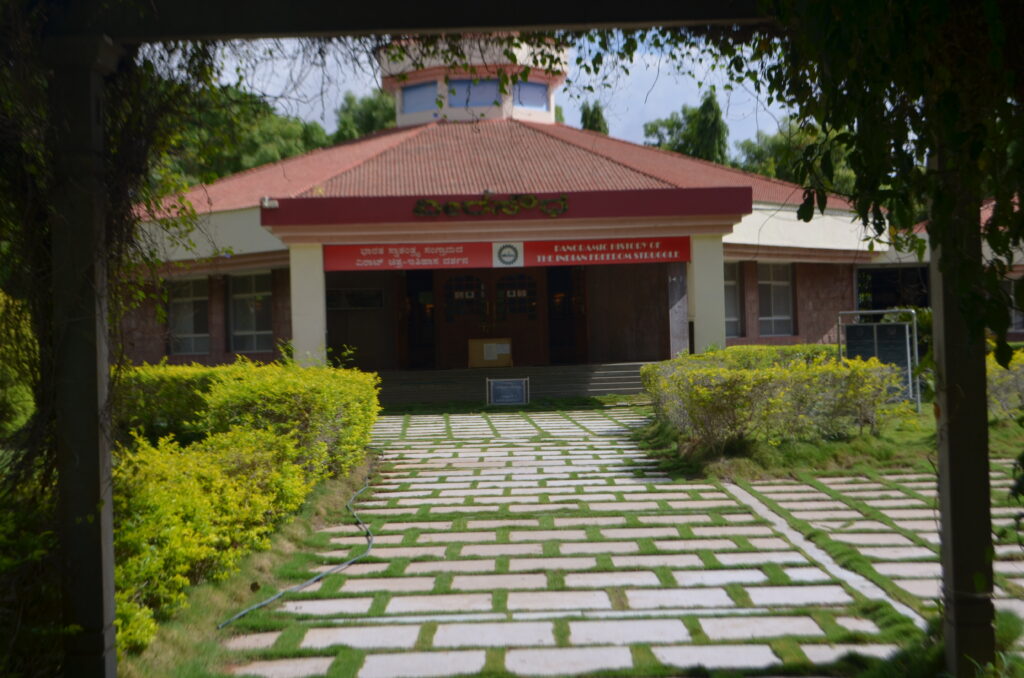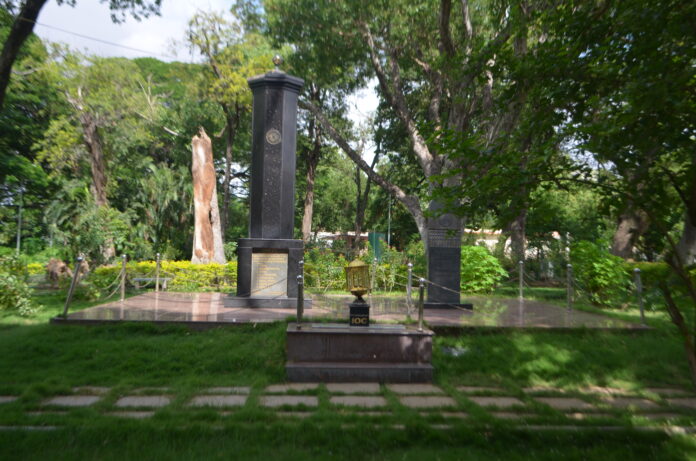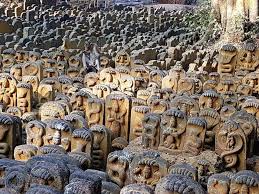Viduraswatha is a hamlet located in Gauribidanur taluk of Chikkaballapur district in Karnataka state. It is a popular pilgrim centre situated near the Karnataka- Andhra Pradesh border and about seven kms from Gauribidanur town. More importantly, it has etched a permanent place in the pages of history of Indian freedom struggle.
As a pilgrim centre, Viduraswatha is known for holy shrines of Sri Aswathanarayana Swamy and Sri Subramanya Swamy. The name Viduraswatha is derived from the huge Aswathavruksha (Sacred fig) located in the village. According to a legend of the Mahabharata times, this tree was planted by Sri Vidura, uncle of the pandavas and kauravas and courtier in the kingdom of Dritharastra ,on the banks of North Pinakini river. It is said that when Vidura was offering prayers to the Sun God, he spotted a small sapling floating in water in the river. Maithreya Maharishi advised Vidura to plant the sapling, workship it to get salvation. Vidura did so with great devotion. Trimurthis Brahma, Vishnu and Maheshwara were so pleased with Vidura’s devotion, they gave him darshan and blessed him and thus the place got the name Viduraswatha.

Viduraswatha is also known for performing Nagaraprathista, installation and consecration of the Serpent God. It is strongly believed that if Nagaraprathista is performed by childless couple having Sarpa Dosha, the Dosha would be warded off and the couple would beget children. We can find thousands of idols of the Snake God in Viduraswatha.
As mentioned earlier, apart from being a well known pilgrim centre, history has acclaimed Viduraswatha as Jalianwalabagh of South India. Because, an incident very similar to Jalianwalabagh Bagh massacre of 1919 and of smaller magnitude, took place at Viduraswatha on 25th April 1938. It is having a significant value in the history of freedom struggle as it rekindled the spirit of freedom amongst the people.
The Mysore Praja Party which was formed in 1934, had given a call for Poorna Swaraj. Gandhiji’s Satyagraha had made people confident and courageous enough to participate in the freedom struggle. Alarge gathering of people in thousands was expected for the annual fair which was to be held at Viduraswatha between 22nd April and 25th April 1938. Under the able leadership of N.C Nagaiah Reddy, N.C Thimma Reddy, T. Ramachar, Srinivas Rao and others, Flag Satyagraha was planned during the same period to catch attention of the people. About ten thousand people marched peacefully to hoist the congress national flag. The police resorted to lathi charge, but the demonstration became severe. Without any provocation, the Sub Inspector of Police fired indiscriminately at the peace loving demonstrators killing ten people and severely injuring thirty five.
Mahatma Gandhi strongly condemned the incident and wrote a letter to then Dewan of Mysore, Sir Mirza appealing for a responsible government. Gandhiji sent Sardar Vallabhai Patel and Acharya Kriplani to meet the King and Dewan of Mysore and to discuss about the incident. This incident was widely published in the British Press and covered even by BBC. As a result of these developments, Patel –Mirza pact was signed in May 1939 and ban on hoisting of tricolour congress national flag was withdrawn. To mark this victory, Second time state level Mysore Congress Session was organized at Viduraswatha in 1939. Gandhiji visited Nandi hills, discussed about the incident with the concerned and inspired the Satyagrahis further.
In 1973, a memorial was built at the site of the incident to honour the people who lost their lives and became martyrs. The names of the martyrs have been etched on the plaque. In memory of the Satyagraha, the local high school has been named as Satyagraha Memorial High School.
In 2004, Veera Soudha was constructed. A photo gallery describing various events relating to the freedom struggle and a library have been developed and housed in Veera Soudha. Every Indian, particularly born in the post-independence era must visit the place and get acquainted with the sacrifices made by the freedom fighters who were instrumental in getting freedom to our country. Veera Soudha is surrounded by the statues of freedom fighters, open air theatre and children’s park,
Personally, I feel proud to say that I hail from Gauribidanur Taluk which has earned permanent and a prominent place in the annals of freedom struggle.
Friends, one can travel to Viduraswatha either by bus, train or own vehicle. I strongly recommend that every reader travel to Viduraswatha, visit the photo gallery and other memorials and get the itch of patriotism intensified.







Very well written. Nicely narrated. Appreciation with full marks.
Thanks for giving in depth details of Vidurashwatha both as pilgrim centre and freedom fighters’ struggle centre. Long back I visited this holy and patriotic centre. worth seeing place.👍
I have also visited many times.The place is excellent. During weekends lot of rush is there.
I have visited the place many times. It is very near to Bangalore. Route also is fine
Nice place to worship and visit during weekends.
Very informative travelogue. I am also very proud to say that I hail from Mudugere village very nearer to Vidhurashwatha. I have visited good number of times and even I have taken NSS Volunteers of SJR College, Bengaluru to explain the importance of Vidhurashwatha. I am also very proud because I was the Student of Dr.B.S.shrikanta
Nice article sir
It was enriching and at the same the article invoked an urge to visit Viduraswatha and experience both….a feeling of divinity and patriotism.
Thank you sir for creating awareness about Vidurswatha… a historically significant place.
It’s a historically significant place and this is very informative.I have been so lucky to have you as a principal.Your wisdom, care, and wit have had an immensely positive impact on us..Thank you sir.
Very well written article Sir. Detailed information shared about this historical place with rich history associated with it.
I never knew there was such a historical here in South India